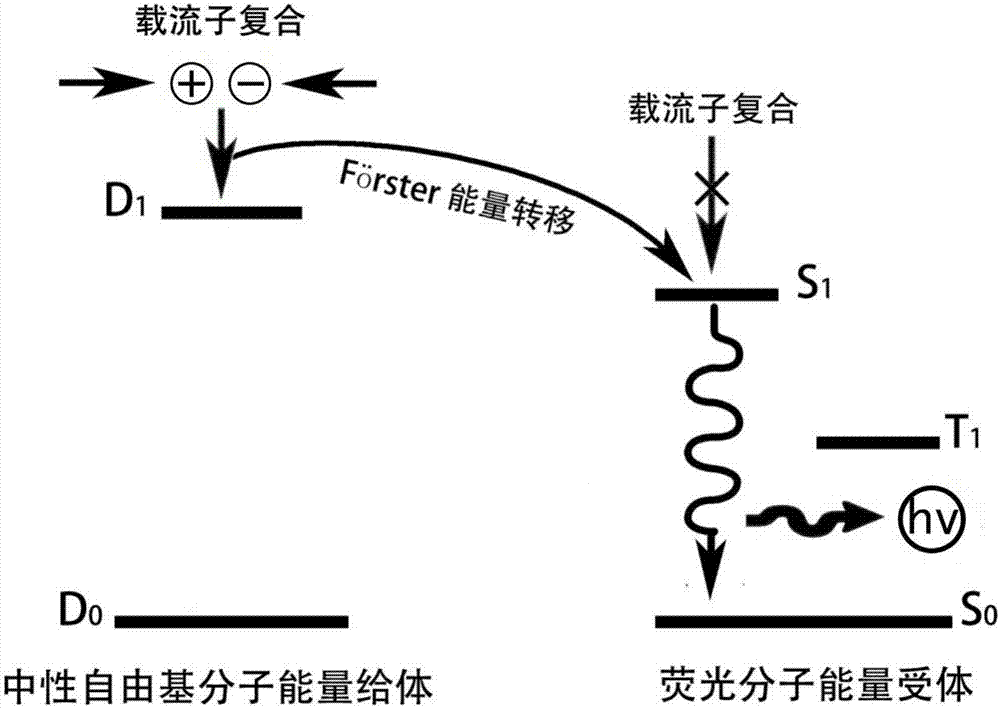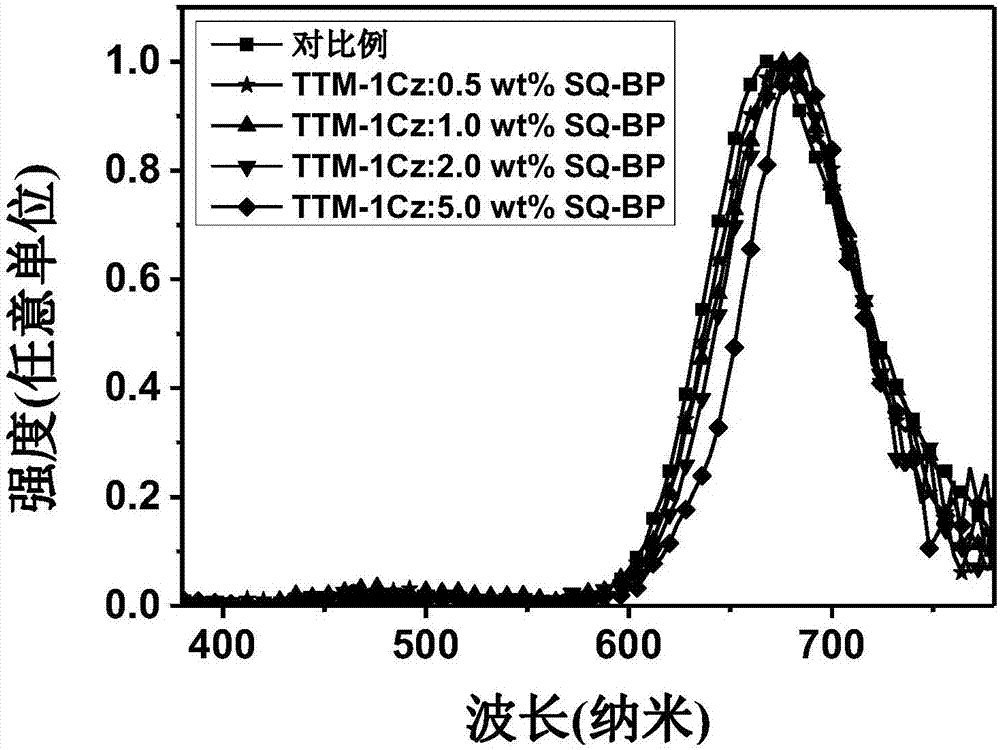Free radical doublet sensitized fluorescent organic light-emitting device
A technology for sensitizing fluorescence and free radicals, which is applied in the fields of electrical solid-state devices, semiconductor/solid-state device manufacturing, electrical components, etc., and can solve problems such as expensive, scarce resources, and expensive materials
- Summary
- Abstract
- Description
- Claims
- Application Information
AI Technical Summary
Problems solved by technology
Method used
Image
Examples
Embodiment 1
[0040] The organic light-emitting radical molecule we choose is TTM-1Cz([4-(N-carbazole)-2,6-dichlorophenyl]bis(2,4,6-trichlorophenyl)methyl radical, Its molecular structure is shown in the following formula), and the selected parent material is its precursor molecule aHTTM-1Cz ([4-(N-carbazole)-2,6-dichlorophenyl]bis(2,4,6-trichlorophenyl) Chlorophenyl) methane). TTM-1Cz is a structurally stable π-radical material that can be vacuum thermally evaporated to form a film. We choose SQ-BP(2-[4-(N-butyl-N-phenylamino)-2,6-dihydroxyphenyl]-4-[(4-(N-butyl-N-phenyl Amino)-2,6-dihydroxyphenyl)-2,5-diene-1-ylidene]-3-oxocyclo-1-en-1-alcohol sodium) as guest fluorescent molecular luminescent material for doping , whose structure is shown below. Its characteristic is that the absorption spectrum of the guest fluorescent light-emitting molecule and the emission spectrum of the host organic light-emitting free radical molecule must overlap. The larger the overlap, the more effective the...
PUM
 Login to View More
Login to View More Abstract
Description
Claims
Application Information
 Login to View More
Login to View More - Generate Ideas
- Intellectual Property
- Life Sciences
- Materials
- Tech Scout
- Unparalleled Data Quality
- Higher Quality Content
- 60% Fewer Hallucinations
Browse by: Latest US Patents, China's latest patents, Technical Efficacy Thesaurus, Application Domain, Technology Topic, Popular Technical Reports.
© 2025 PatSnap. All rights reserved.Legal|Privacy policy|Modern Slavery Act Transparency Statement|Sitemap|About US| Contact US: help@patsnap.com



